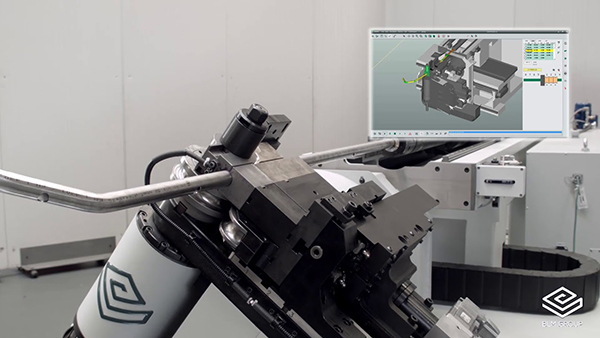
According to BLM Adige, the main advantages of an all-electric tube bending machine include production flexibility, repeatability, production rate, quality, the absence of transition periods and lower energy consumption.
In terms of production flexibility, an all-electric tube bending machine eliminates the manual adjustments usually necessary on other types of tube bending machines, such as adjustment of the clamp die, pressure die and mandrel position, or of the clamp die pressure on the tube.
For the manufacturer, the most important factor in tube bending is repeatability; that is the degree of consistency among the measurements of the part across the entire batch. An electric tube bending machine can record the axis co-ordinates and tube bending parameters, recalling them at any moment.
Another benefit is speed. An all-electric tube bending machine’s movement is controlled by a CNC axis, tapping into the full potential of the machine’s programming software. As a result, the release movements from the tube can be smoother and faster.
With regard to quality, an all-electric tube bender can modulate the force exerted by the various electrical axes in-process depending on the tube being bent. Both for thin or thick tubes, ductile or hard material, this type of tube bending machine can properly manage the force exerted, modifying it as needed in-process to improve quality.
Furthermore, electric tube bending machines do not have hydraulic oil to heat up and their electric drivers have the same behaviour regardless of temperature or thermal shocks. So, there are no ‘transition periods’, defined as time intervals in which the machine working conditions change.
Last but not least, to save operational costs, electric bending machines only consume energy when needed, resulting in considerable savings for the manufacturer.
For further information
www.blmgroup.com















